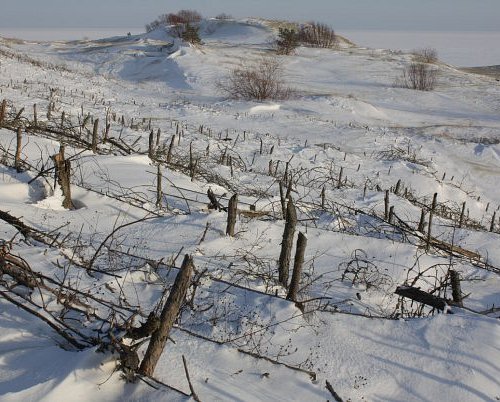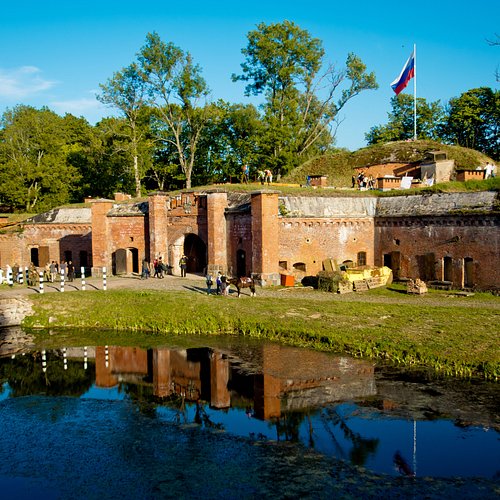10 Points of Interest & Landmarks in Kaliningrad That You Shouldn't Miss
A little extra chunk of Russia stuck between Lithuania and Poland on the Baltic Sea, Kaliningrad was known as Königsberg from its founding by the Teutonic Knights in the 13th century until after World War II. It was renamed, repopulated with Russians and became part of the Soviet Union. Today, as it has been for centuries, it’s known for amber products, with most of the world’s harvestable amber still lying off its coast. The 14th century Königsberg Cathedral is a main city attraction.
Restaurants in Kaliningrad
1. National park Curonian Spit
Overall Ratings
5.0 based on 2,786 reviews
Reviewed By nevzatv2014 - Ankara, Turkey
I admire Curonian Spit, perhaps one of the most amazing and impressive natural beauties of Lithuania, and the effort to protect it. This area, also called the Sahara of the Baltic Sea and included in the UNESCO World Heritage List, consists of about 90 km long narrow saber-shaped dunes that divide the Curonian Lagoon from the Baltic Sea. Curonian Spit and its surroundings is a national park that is very well protected by the state. In this national park created with pine trees that people have planted with their hands for years, they have carefully lived more than 30 species of endangered birds and more than 800 different plants. I can say that I have never seen such a good visuality anywhere else in the world. The charming town of Nida and the small "Ethnographic Homestead of Fisherman" named fishing house museum, "Gintaro Galerija Muziejus" named amber museum and "the Horizontal Granite Sundial" are also worth visiting in Curonian Spit.
2. Fort XI Donhoff
Overall Ratings
5.0 based on 280 reviews
Fort XI Donhoff is the fortified structure built in 1877-1882. It is one of 12 forts composing the outer fortification ring of former Fortress Koenigsberg previously called "Night feather-bed of Konigsberg". In the end of the Second World War on April 7, 1945 the garrison located in Fort XI capitulated practically without fight. On this reason it is the most undisturbed and well-preserved fort among other Kaliningrad forts. Nowadays guests visiting Fort XI Donhoff have possibility to touch pure history and see with their own eyes the part of Koenigsberg defensive system that existed before 1945. There are such interesting exhibits and objects as original German gate, iron spiral staircases, barracks corridors, an observation post, the operating lifting mechanism for a raising of ammunition, etc. Now it is under the management of a private company that preserves its identity and develops the fort as a museum, touristic, cultural and artisan center.
3. Sculpture Grandfather Homlin
4. King's Gates
Overall Ratings
4.5 based on 265 reviews
The Historical and Cultural Centre “The Grand Embassy” in the King’s Gate (Department of the Museum of the World Ocean) The museum is located in the historical building, which used to be one of the elements of the old city’s defensive system of the XIX century. In 1843, laying of the gate’s foundation stone was attended by King Friedrich Wilhelm IV of Prussia. Rulers, craftspeople and peasants went through the gate.Today the King’s Gate is a museum dedicated to the origin and development of the fortress-town, visits of outstanding foreigners to Koenigsberg, origin of Russian diplomacy and old links between this land and Russia. Keys, locks, chest, rare maps and images reconstruct the discrepant history of Koenigsberg-Kaliningrad step by step. The famous Prussian Cat meets all the visitors. He is a keeper of the city’s keys and brings luck to everybody who strokes him.There is a souvenir art galley “Poterna” located in the immediate vicinity of the Gate. Poterna used to be an integral part of the defensive belt surrounding Koenigsberg of the XIX century as well.
Reviewed By robert-not-home
Not much left in Kaliningrad from pre WWII and these old gates are one of the few things you will come across that are remaining and restored. As part of your site seeing it is worth a few minutes of your time for sue to appreciate the architecture and history.
5. Protection of the Holy Virgin Temple
6. Fort № 3 - King Friedrich-Wilhelm 1
7. Konigsberg Stock Exchange
8. Sackheim Gate
Overall Ratings
4.5 based on 60 reviews










